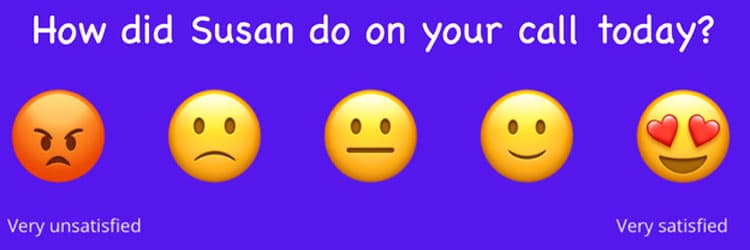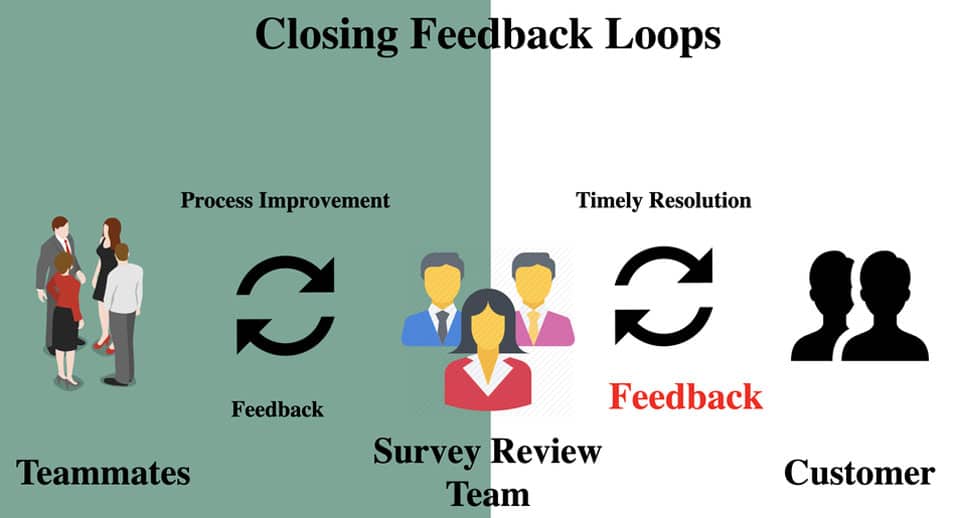Surveyed To Death: Years ago, NPR did a satirical survey about surveys. They introduced their survey this way:
Thanks for reading this article on the outrageous proliferation of surveys in contemporary America.
You know what we’re talking about: When you buy a computer, the retailer sends you a survey; so does the computer company. When you order a film or a sundress or a box of fruit online, you are asked to complete a survey…
To help us sort through the surge of surveys, please take just a few minutes to complete the following survey.
You get the picture!
Surveys bombard employees and customers, and much of what customers share in response to surveys don’t guide organizational improvement.
Before I offer tips on how to cut through the cutter when you ask for a survey, let’s put surveys in context.
Surveys should be a central element in a well-designed, multi-modal customer listening program which also includes:
- Customer Stories (received from team members and informal discussions with customers)
- Subjective Customer Input (captured in online and offline customer communications and through activities like focus groups)
- Key Performance Indicators (reflected in calculations of customer engagement such as cross-sell, customer lifetime value, customer retention, and customer complaints)
Garnering Attention
Since surveys are essential for collecting large quantities of data related to important customer perceptions (e.g., satisfaction, repurchase intent, and the likelihood they will recommend your business), they aren’t going away!
So, let’s look at five guidelines to ensure you are getting helpful responses from a representative sample of those you survey.
- Create, Short, On-Brand Surveys – If you make something fun, it gets done. Unfortunately, most surveys are functional and boring. Very few surveys infuse engaging questions written in the brand’s voice. Be approachable, visually engaging, and “on-brand.”

- Where Possible, Make a Personal Ask for Survey Completion – Studies show people are up to 34 times more likely to respond to a personal survey request than an impersonal one. Rather than saying, “Our company will be sending you a survey,” it’s more effective to say, “I have a small favor to ask. When you get an upcoming email survey, will you please take a few minutes to complete it?”
- Give a Compelling Reason to Respond to Your Survey – Most people are skeptical about how they will benefit from completing a survey; it’s helpful to explain why survey completion is worth their time investment. You might want to say something like, “My colleagues and I care about your experience with us. Your input will be read and acted on for you and other customers.”
- Close the Loops – Survey teams must close two loops (as depicted below) when customers share data. The customer needs to know that we heard them and what, if any, action we are taking on their input. Similarly, relevant team members need to know what customers are saying – so they can fix root cause issues.

- Appreciate Respondents – Say thank you to respondents for their time and input and use words like ‘value’ and ‘appreciate.’ For example, “Thank you in advance for completing the survey. I value and appreciate your willingness to share your experience.”
Written by Joseph A. Michelli.
Have you read?
Top Actions CFOs Can Take to Contain Costs Within Their Supply Chains by Ali Hasan Raza.
Overcoming the Challenges of Launching a Unique Business by Vanessa Lau.
Critical Mistakes to Avoid in Strategic Communication by Fotis Pantopoulos.
How to Plan Business Travel Effectively in 2023 by Robert Hoffman.
No Means No by Mark Petruzzi.
Track Latest News Live on CEOWORLD magazine and get news updates from the United States and around the world.
The views expressed are those of the author and are not necessarily those of the CEOWORLD magazine.
Follow CEOWORLD magazine headlines on: Google News, LinkedIn, Twitter, and Facebook.
Thank you for supporting our journalism. Subscribe here.
For media queries, please contact: info@ceoworld.biz
